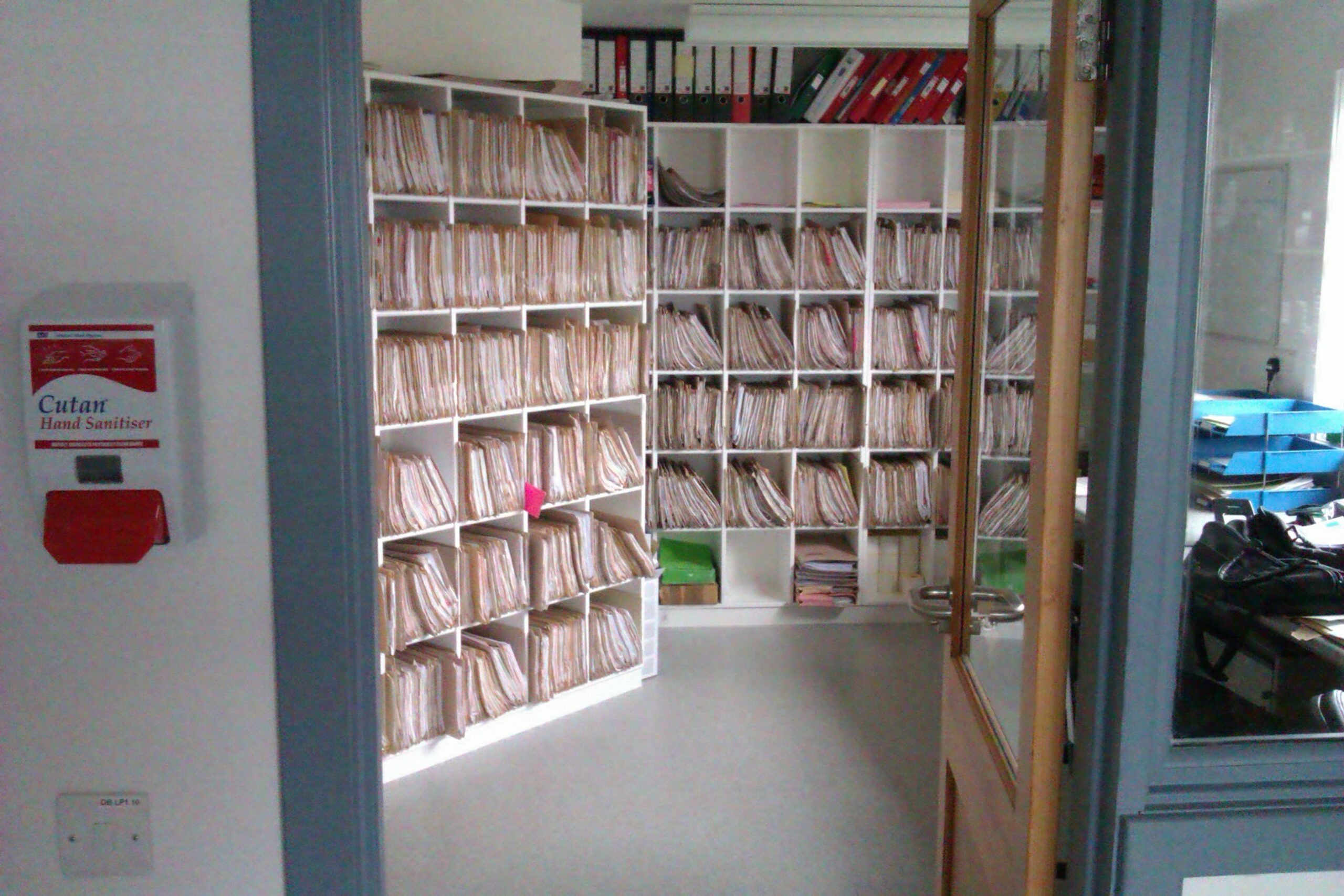So what does it all mean? – part 1 – Lloyd George envelopes

Lets face it, there’s a lot of data about nowadays. In the field of healthcare, Lloyd George envelopes were first used in 1911, when the politician David Lloyd George introduced a national health insurance scheme for low-paid working men. Now most of the information that would have been recorded in these folders is held digitally, often summarised with the original record lost. A hospital medical records library is often a vast and cramped space where millions of sheets of paper are carefully organised.
Of course data aren’t just growing in healthcare – I dread to think what the big tech platforms know about me. The route I took each morning for my walk instead of a commute, my heart rate at each stage or when I paused to natter to a local person caring for her horses.

Looking at this form much of the meaning is obvious. However even the colour has meaning – blue for the girls, and pink for the boys.
But, as the title of this post says, what does it all mean. All these data don’t provide meaningful information without some means to explain the meaning. As informaticians, we have many techniques for coupling the meaning to the datum so it can be understood, brought into context and turned into (sometimes useful) information. This form shows some of those – the tick box (enumerated list) for single, married or widow. Headings for the fields to separate the forenames from the surname, creating a data structure. An unique identifier / primary key in the form of the NHS Number. A sequence of addresses in chronological order or for the employment history.
Forms with repeating sections, perhaps some logic to switch the labels (if the envelope were blue it would say widower, not widow) and a tabular section (for the employment history) are at the heart of modern business, including the business of healthcare.

In contrast to the structure of the envelope, the insert has very little structure – a link back to the main envelope in the header (name, address, date of birth and NHS number) and then a simple journal with dated, free text entries.
Note the punched hole to keep each entry in order using a treasury tag.
When we move records onto a computer, much of the structure becomes entangled with the design of the computer system (or specifically the design of the database) and that makes transferring data from one computer system to a different design problematic. If a computer is to have any value over and above a glorified filing cabinet, the computer needs to be able to process the meaning of the record as well as the content. Only when the meaning in a computer can be shared can the value of the computer be realised and exploited.
Using Unified Modelling Language
In this diagram using the UML notation I’m representing the loosely typed fields on the folder, with the aggregated address registrations and simple employment details. These then link to a set of pages, each of which has a set of entries.
I confess I don’t know what the column headed * is used for (or what the enumeration A, V, C refers to).
In part 2 I give a simple hospital case note a similar analysis.